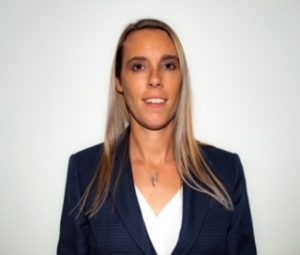Whiter whites…brighter brights: The ozone difference
Laundry rooms in long-term care facilities have never been profit centers, yet they hold one of the keys to customer satisfaction and facility reputation. Residents and families notice whether linens are fresh and if clothes are clean without showing signs of industrial abuse. But what if you could lower operating costs and still provide quality laundry services? Adding ozone to the wash could be the answer.
The general public is acutely aware of the ozone layer—the gaseous umbrella that protects Earth from solar ultraviolet (UV) radiation. However, there are other important benefits provided by ozone, or O3. It is used to purify bottled water, municipal water, and well water. Ozone is also an effective, natural cleaning and disinfecting agent, which makes it an excellent choice for long-term care laundries.
The Ozone Difference
A form of oxygen with an extra molecule, ozone is injected into the wash water, where it breaks down rapidly, oxidizing the fatty oils that allow dirt to adhere to fabric. As it does this, it also disinfects the linen and helps to whiten the laundry load.
A natural oxidizer, ozone is stronger than chlorine and other oxidizers used to kill microorganisms and remove organic and inorganic chemicals from fabrics. And because ozone “decays” rapidly, there is no residue buildup, resulting in whiter whites and brighter colors. Linen and clothing life is also extended because ozonated laundry uses much cooler water temperatures.
Ozone systems generate the gas on-site for immediate use only, which contributes to its roster of benefits for facility laundries. Cost savings are realized through energy and water conservation and reduced chemical (i.e., detergents and bleaches) use. A typical long-term care facility laundry operation runs wash water at about 180°F, but an ozone system operates at a temperature range of approximately 50 to 60°F.
In addition, ozone breaks down the molecular bonds of soil quickly, so fewer rinses are needed than in conventional laundry processes. Consequently, soils are effectively removed from the wash and do not redeposit on fabrics, preventing laundry “graying” and reducing the need for bleaching. Items washed with ozone dry faster and come out softer and fluffier, a benefit that residents and their families quickly notice.
Fabric life is extended because shorter cycle times, cooler wash temperatures, fewer rinses, and less exposure to chemicals reduce the wear and tear on laundry items. Above all, ozone purifies and disinfects. Its efficacy against bacteria, viruses, and other microorganism makes using ozone a smart addition to infection control procedures.
Converting to Ozone
It’s not necessary to revamp the entire laundry system to install an ozone system to meet a facility’s specific needs. Steve Gerace, commercial water and laundry manager at ClearWater Tech, LLC, (https://www.cwtozone.com) in San Luis Obispo, California, says that almost any laundry can be converted to an ozonated system, even those designed as households. “Ozone laundry systems are sized to be compatible with the existing washers. These systems are compact, wall-mounted, and take up very little space.” He adds that ClearWater Tech and other manufacturers offer systems that operate on washers ranging from 35 lb. to 400 lb. each. “It is not the size of the facility, it is the amount of laundry processed that determines the time frame in which the system will pay for itself,” he adds. Ozone generators can be installed as add-ons to existing laundry equipment, eliminating the costly financial outlay for new machines.
Ozone systems are designed as recirculation injection (RI), direct water-injection, and air-injection systems. With recirculation systems, water is continually cycled back to the ozone system for reoxidation at a predetermined level, and returned to the washer for laundry sanitation. Piping is put in place to facilitate this continuous recirculation. This design can handle the heaviest demands and save water, energy, and time, although it can also be the most expensive of the three alternatives in terms of initial cost. RI systems permit most traditional chemical cycles to be replaced with cold water and minimal chemical injection.
The direct water-injection system also provides a good return on investment through chemical and energy savings. This method injects ozone directly into the cold water supply line. A variation on this approach includes a contact tank in which ozone is mixed with cold water and stored until needed by the wash cycle. The contact tank approach is used to make it possible to achieve higher concentrations of ozone, which allows for effective disinfection and odor control in any of the cold water cycles. The ozonated water is not recharged once it enters the washer. This method offers effectiveness with a solid return on investment primarily from savings in energy and chemicals.
In air-injection systems, ozone gas is injected directly into the catch basin of the washer. Because it is injected into the washer, as opposed to the water supply, ozone is treating linen throughout the entire wash time. A properly designed air-injection system will activate traditional laundry detergents, allowing them to do their job with less water and at a lower temperature. In this approach, ozone provides disinfection and overall laundry quality with reduced costs. Disinfection is achieved with the application of ozone gas in solution, as well as directly into the linen as it folds into the ambient ozone within the wash drum. These systems typically have an ambient air ozone monitor, within the facility and/or within the wash drum, to control off-gassing and eliminate any concern about high ozone levels in the laundry room. Of the three system alternatives, the air-injection method will yield the highest return on investment, according to Gerace.
Ozone laundry systems save energy, water, and time, and increase fabric life. These benefits quickly make up for the cost of converting laundry operations to an ozone system. With ozone laundry, facilities can improve their bottom line, satisfaction rates, and the environment.
For more information, call (800) 262-0203 or visit https://www.cwtozone.com. To send your comments to the author and editors, please e-mail hoban0207@nursinghomesmagazine.com.

Sandra Hoban was on I Advance Senior Care / Long-Term Living’s editorial staff for 17 years. She is one of the country’s longest-serving senior care journalists. Before joining Long-Term Living, she was a member of the promotions department at Advanstar Communications. In addition to her editorial experience, Sandi has served past roles in print and broadcast advertising as a traffic and talent coordinator.
Related Articles
Topics: Articles , Operations











